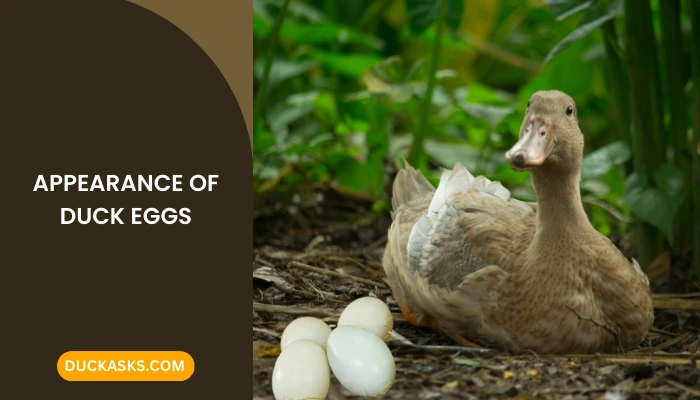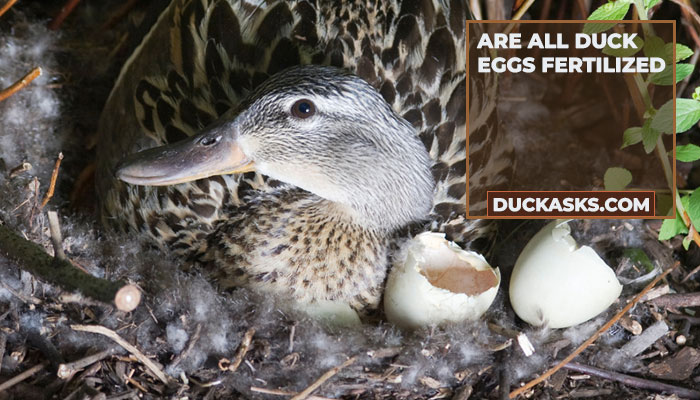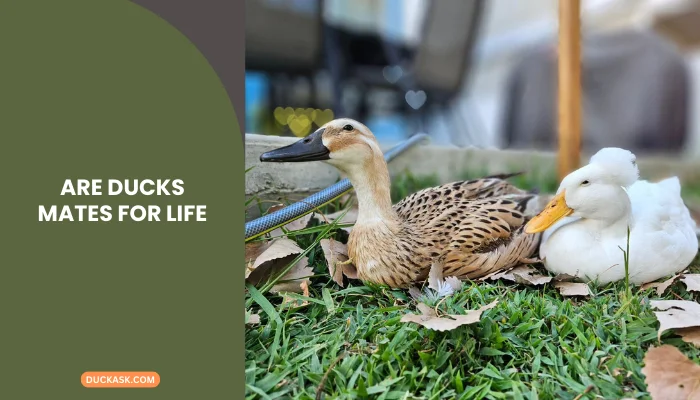What Temperature Do Ducks Need To Be Incubated?
Hatching−as much as we love to wait around for the little bundles of joy to arrive, we remain tense as to how we can handle them. Egg hatching is not very difficult but it does come with its criticalities.
Mother nature has designed its creations and procreation to perfection. Not an inch here or there.
For hatching to occur as smoothly as it does naturally, let’s observe how it happens and how we can replicate that.
The correct temperature at which ducks hatch is 37.5 degrees Celsius. Temperature above or below that can cause either improper hatching or no hatching at all.
Now that you know the exact temperature, let’s find out more about other factors that add to the temperature for optimum conditions for the eggs to hatch.
Looking for more articles about ducks breeding:
Why Does Temperature Matter for Duck Eggs?
To summarize elaborate scientific jargons and descriptions, duck eggs, like a lot of other gallinaceous birds, require an external heat source for egg hatching. The heat primarily comes from the body of the mother duck followed by a comfortably hugging place where the eggs are laid.
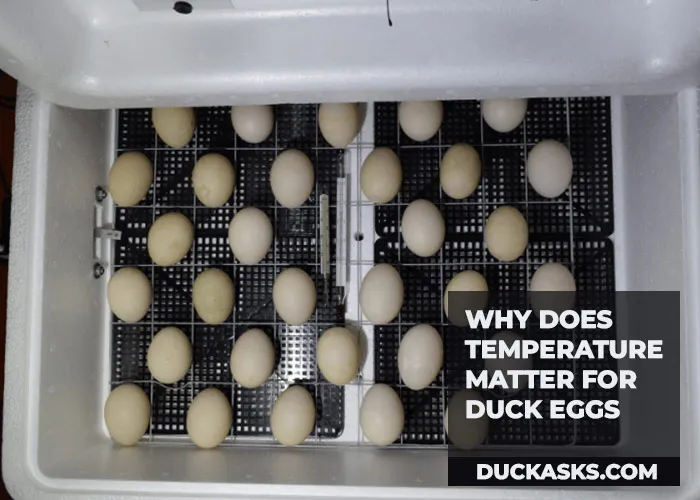
Since inside the egg is a world of protein molecules like many enzymes, heat is needed to support proper metabolism and development of the embryo.
The yolk also needs to be mobilized at a certain rate inside the egg for it to hatch. This is called ‘Rate of mobilization’, if the rate goes awry due to inadequate external heat supply then it will negatively impact hatching.
What Is the Best Temperature for Eggs Incubation?
The answer is not as straightforward as you may wish. Temperature works in tandem with humidity. Throughout the period of time the embryo remains inside of the egg, different stages of its growth require varying temperature ranges.
The Pre-hatching stage requires an optimum temperature of 37.5 to 38 degrees Celsius (100.5 degrees Fahrenheit).
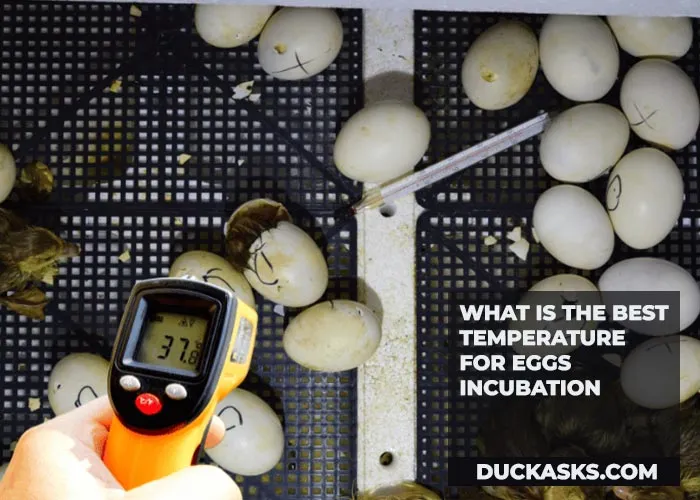
During the pre-hatching phase, humidity needs to be maintained around 70 percent to generate enough pressure for the egg to start hatching.
Temperature range throughout the egg life should remain between 37.2 to 38.9 degrees celsius (99 to 102 degrees Fahrenheit).
What Temperature Range Kills Duck Eggs?
Temperature beyond 38.9 degrees celsius (102 degrees Fahrenheit) is proven detrimental for the survival of the duckling. Don’t let the temperature remain at this temperature for too long.
How Long Can Duck Eggs Sit Before Incubation?
Ideally a duck egg should sit about one to three days. As more days pass since the day they were laid, you should be expecting an increase in rate of hatchability.
If you cross 7 days, the rise in the rate of hatchability reaches 5 percent. But, if it exceeds two weeks then you should expect a loss of 10 percent.
What About Humidity?
Repeating what has been mentioned before, different stages of egg hatching and these individual stages call for varying needs. As the egg starts to develop, it calls for humidity to increase gradually.
During the first seventeen days, the humidity range should be between 50 to 55 percent. After that till the egg hatched, humidity should be maintained at 70 percent.
Does Temperature Differ from Egg Shell to Egg Shell?
Not all the fingers of a hand measure the same height. Similarly not all eggs laid in a batch have the same egg shell thickness.
It is the law of nature that some differ from the others. The thicker eggshells require higher temperature while thinner ones need lower.
There are some that are flimsy which need to be kept separately for incubation. An average of 37.8 degree celsius is ideal for a wide range of egg shells.
What If the Temperature Is Too Low?
If the temperature remains on the lower side, embryogenesis of the chicks will remain defective. Heart will be larger than usual while the head will remain smaller followed by improper torso development.
The chick will also fail to maintain proper rectal temperatures key for the duck to survive both inside the egg and first week of post-hatching.
This state of the duckling is called ‘Physiological zero’. Where the improper development of the duckling can cause it to cease its life.
What If the Temperature Is Higher Than the Optimal Range?
If the egg shell temperature is too high, the interior of the egg will be severely affected.
Too high temperature on the inside will cause internal damage to the organs and injure the duckling. And, if the injury is too grave then the duckling will not survive to hatch and die.
What Temperature Is Too Hot for Ducklings?
Ducklings naturally have the tendency to find the spot with ideal temperature. One important thing to keep in mind is that the incubator should have heat equally distributed. Ensure the height of the lamp, temperature distribution and intensity of the heat.
Even though the ideal range is 37.2 to 38.9 degrees celsius (99 to 102 degrees Fahrenheit), 40.9 degrees celsius (104.5 degrees Fahrenheit) is just it for the little ones to bid farewell. Never allow it to injure the poor babies!
Can You Use Heat Lamps for Incubation?
From eggs to hatching to being walking ducklings, these babies need warmth− in other words, they need heat lamps. Most commonly used heat lamps are the infrared heat lights.
If you want to go a little extra on your budget you might want to invest in a short-wave infrared heat lamp incubator.

These incubators come with 250-watt heat lamps, spending 115 to 125 volts of electricity. 250 watt bulbs can easily cover roughly 25-30 ducklings.
Can Ducks Survive Without Heat Lamps?
There’s something called an offspring fitness measurement. Within these fitness charts include ‘thermoregulatory performance’. This criteria ensures how well a duckling can regulate body heat and optimize its functional capacity throughout its life span.
Studies have shown ducklings to have better performances when they are kept adequately warm during its developmental period. Therefore, heat lamps are absolutely crucial for ducklings to grow up fit and strong.
For How Long Do Ducklings Need Heat Lamps?
It depends on which part of the globe you live in. If you live somewhere with high temperature and humidity then you might need heat lamps for 4-5 weeks. If you live somewhere slightly cooler than you might want to incubate for 6 weeks.
Last But Not the Least
Ducks are very hardy gallinaceous birds. They can survive tough situations unlike chickens. They are relatively easier to breed.
Have a few basics mastered and you’ll be good to go. Their ideal temperature ranges in 37.8 to 38.9 degrees celsius with a humidity range of 50 to 70 percent throughout its incubation period.
Sometimes, many eggs can have varying egg shell thicknesses which affect hatching so be mindful of that while using heat lamps. You want to make sure your lamps are the right ones in sync with the egg shells.
Visit any of our social media platforms for more updates and knowledge on ducks and ducklings. If you liked this article feel free to share on any of your social media pages and stay connected with us on − Facebook, Twitter and Pinterest.
Article References:
- Vet.cornell.edu/animal-health-diagnostic-center/programs/duck-research-lab/hatching-duck-eggs
- Brinsea.co.uk/latest/wp-content/uploads/2017/04/What-if-the-power-goes-off-2010.pdf
- Thepoultrysite.com/articles/why-incubator-temperature-differs-from-egg-shell-temperature
Image Credit: Canva.com/photos




